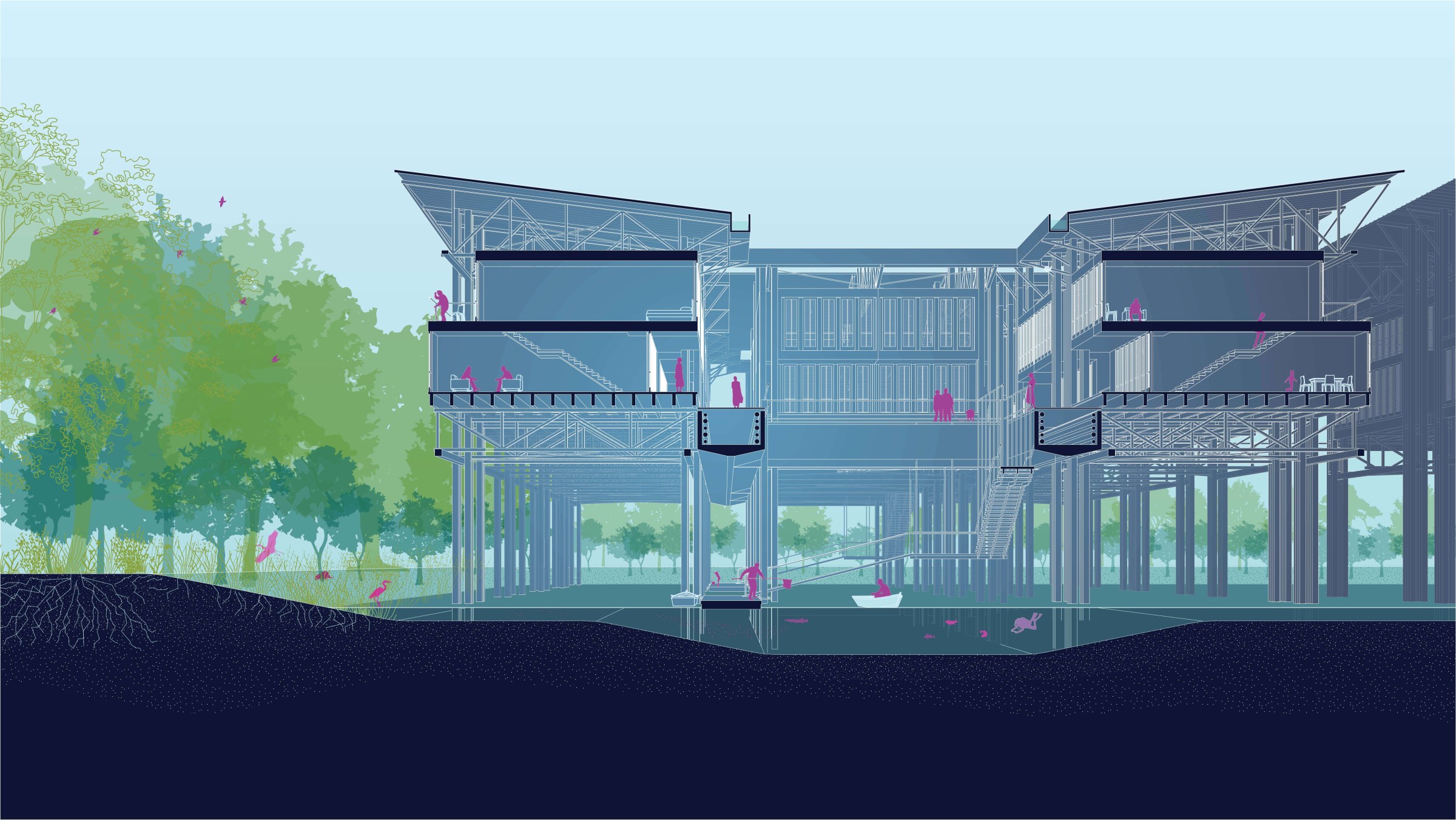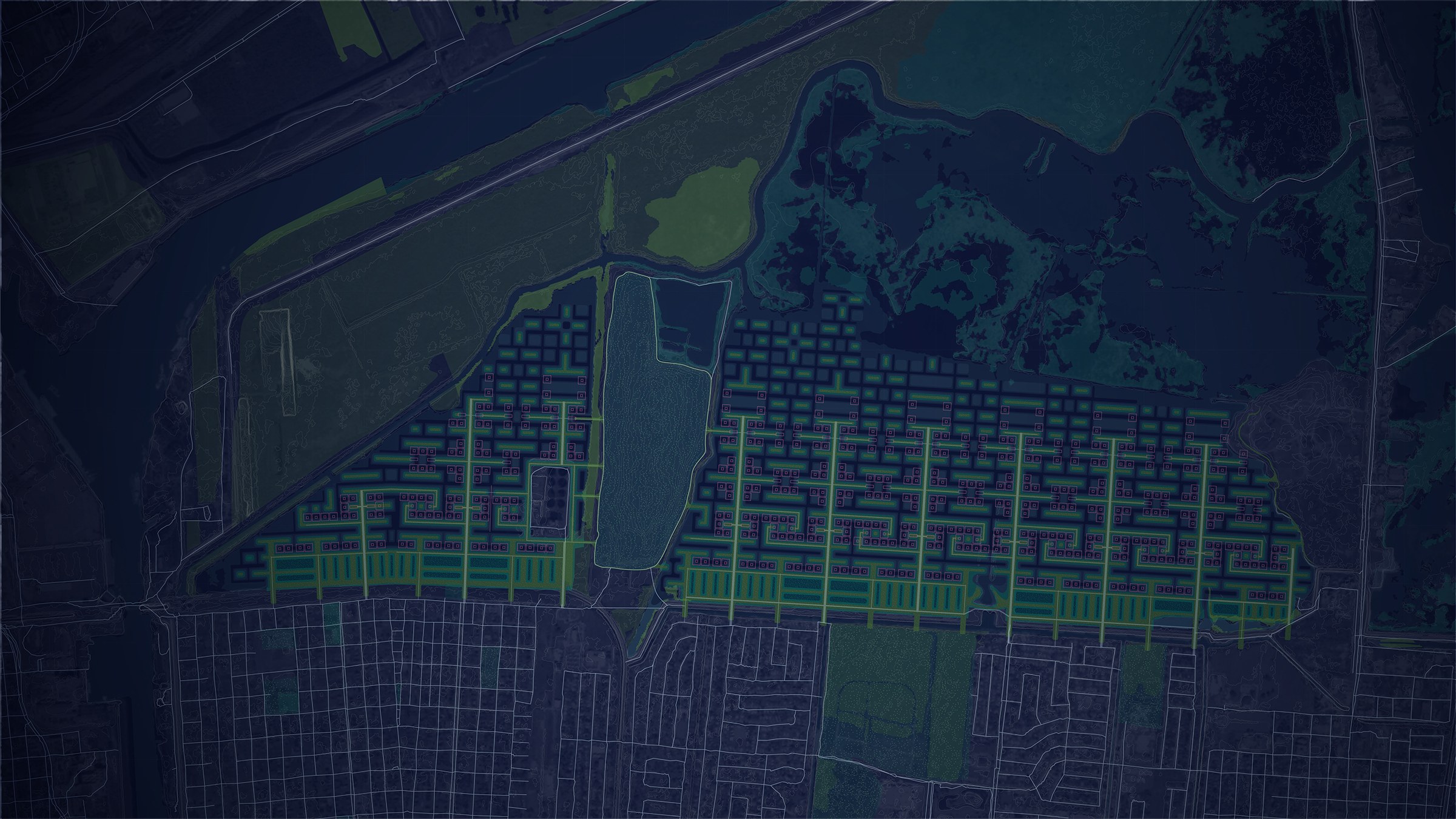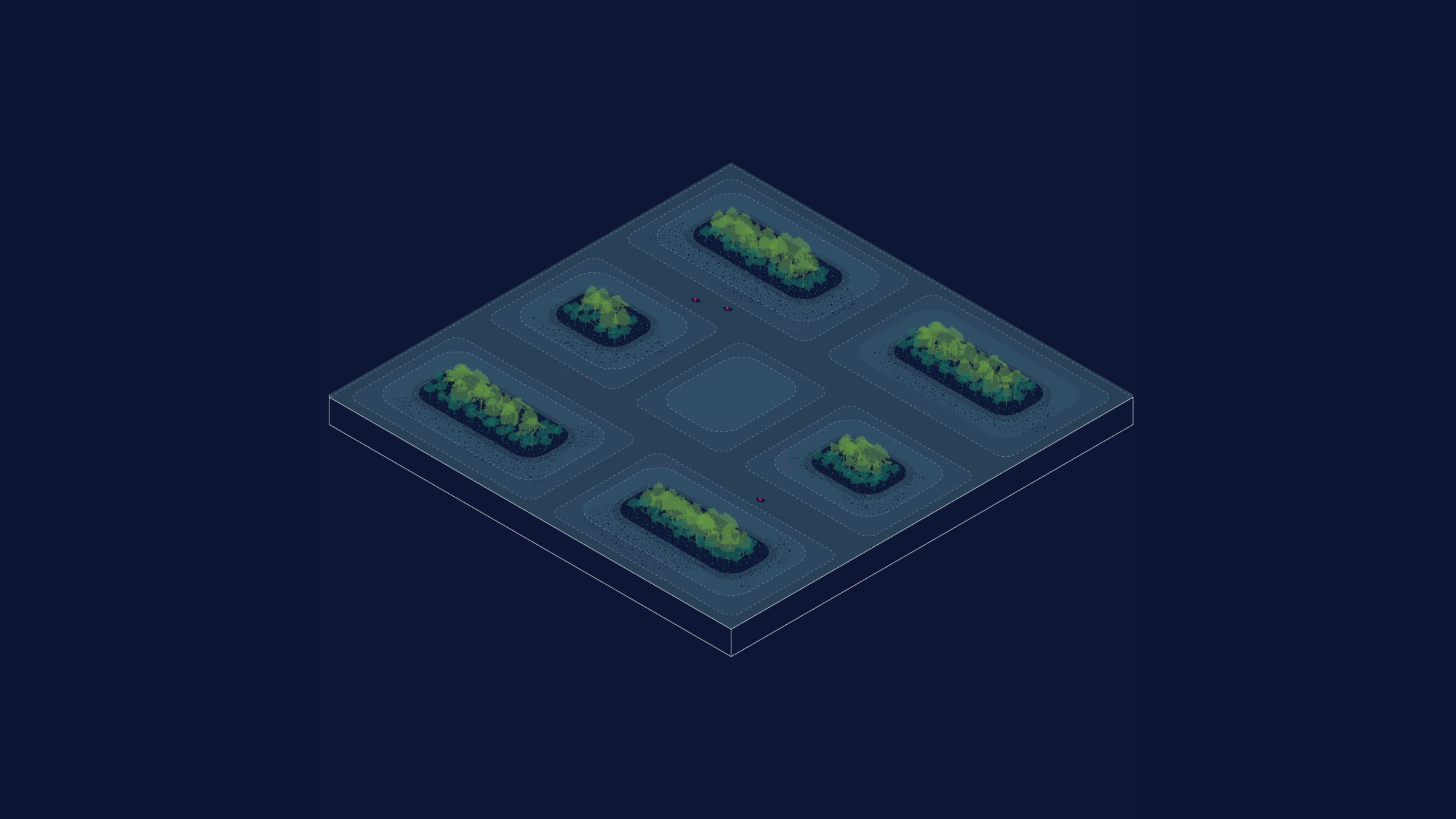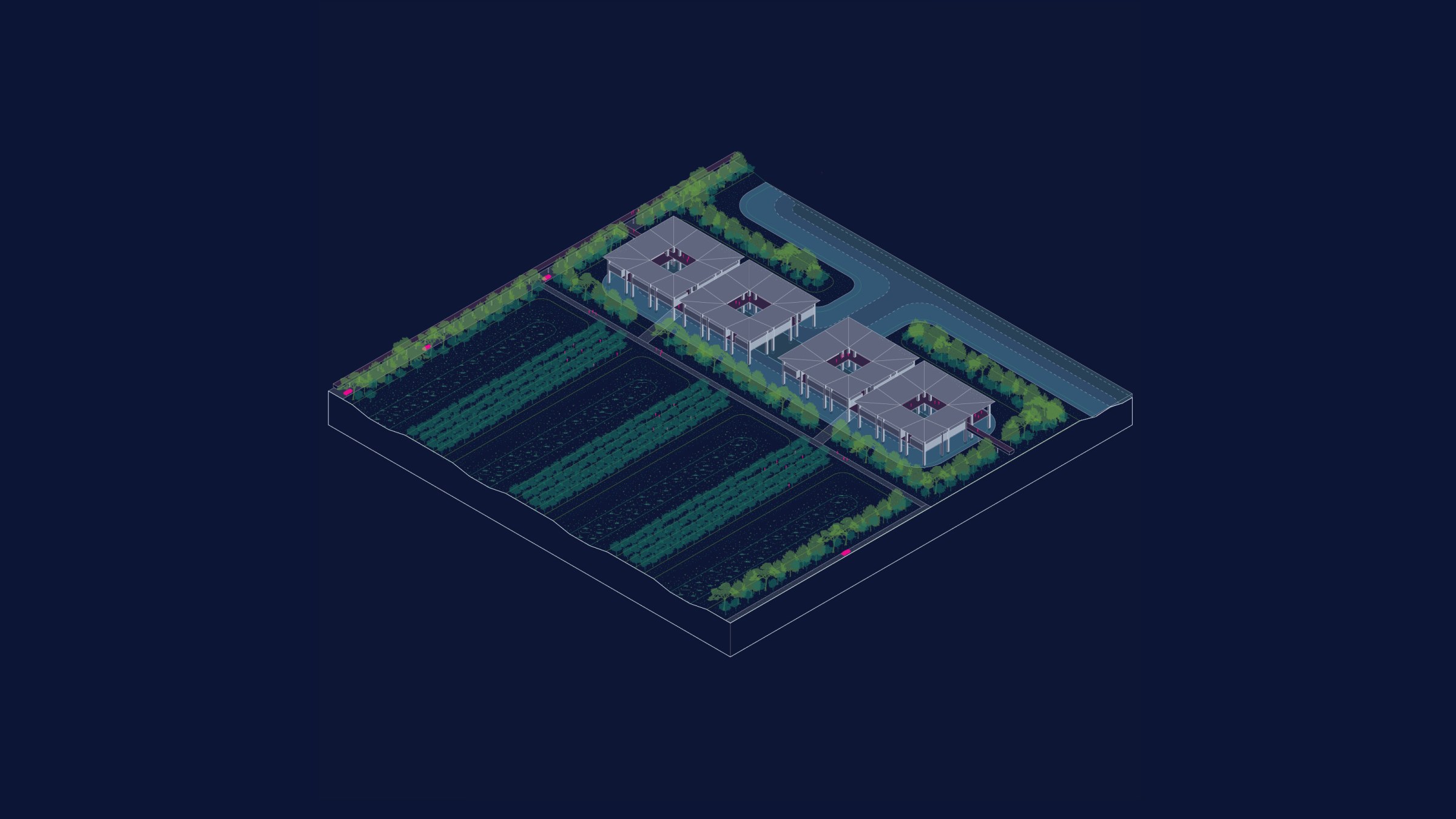Thesis Highlights
"Regenerative Habitat"

Gabrielle Rashleigh, 2021
“Regenerative Habitat: A Speculative Urban Model For Metropolitan New Orleans”
“Regenerative Habitat” offers a spatial test for a climate-adaptive urban model in the face of rising seas, coastal land loss, and increased storm frequency along the Gulf Coast. The project centers on the Bayou Bienvenue Central Wetland Unit, located between Orleans and St. Bernard Parish in Louisiana. Over the course of the past century, this heavily engineered site has converted from a fresh water bald-cypress and water tupelo swamp to open water, leaving the adjacent neighborhoods vulnerable to storm surge. Though stripped of its natural storm surge protection, the Bayou Bienvenue Central Wetland Unit occupies a coveted space within the Hurricane and Storm Damage Risk Reduction system.
As climate change pressures coastal populations to relocate to protected higher grounds, the site, today an urban backyard, offers a location to temporally absorb climate change refugees inside of the levee walls and outside of the subsiding low grounds of New Orleans. Additionally, the site puts forth a model for inhabiting a floodable landscape without relying on the pump system that has exacerbated subsidence in New Orleans. This thesis proposes three strategies for amplifying the ecological and social wealth of the Central Wetland Unit and surrounding neighborhood through marsh terracing, elevated urbanism and regenerative practices & infrastructures. Through these three strategies, “Regenerative Habitat” puts forth an experimental urban model for inhabiting a landscape in flux.
Faculty Thesis Directors: Margarita Jover and Benjamin J. Smith
WORK





